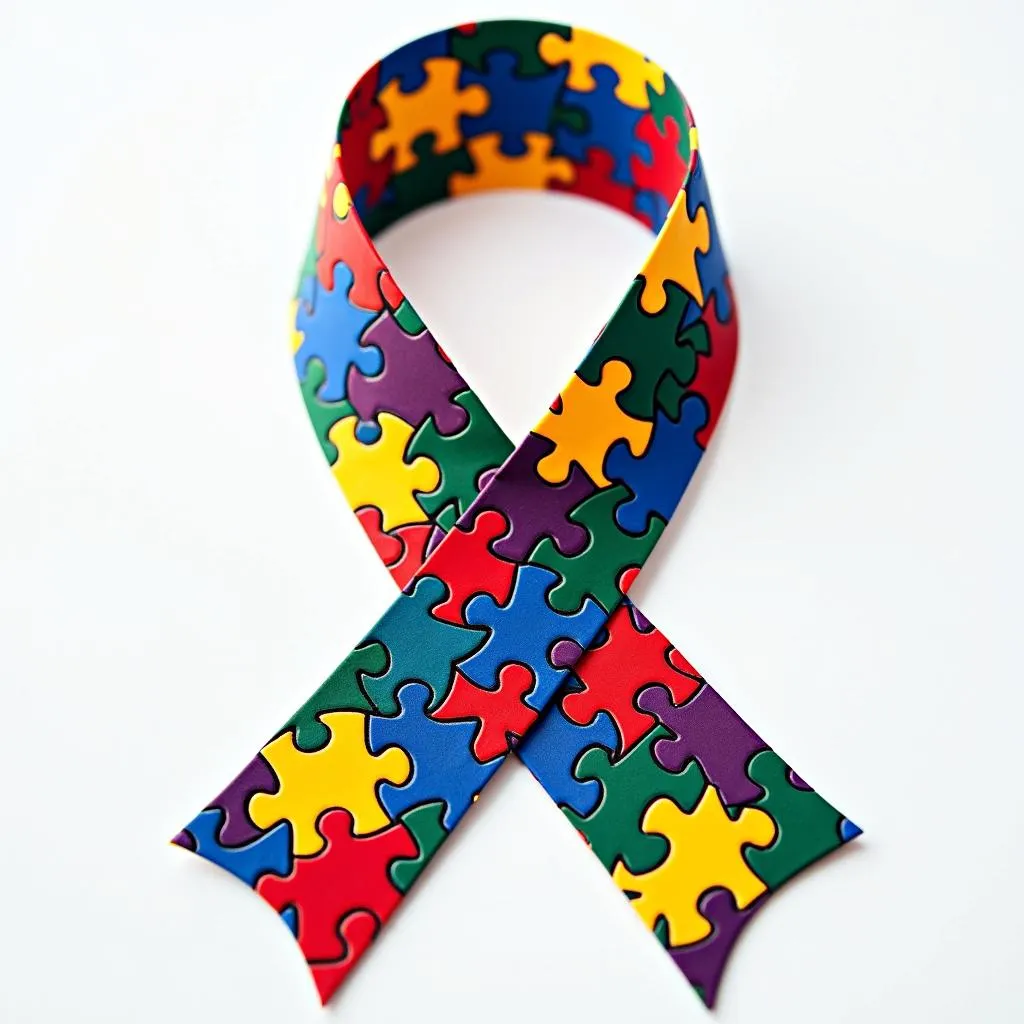The question “is there a color for autism” often arises in conversations about autism awareness and representation. While there’s no single, universally recognized “autism color,” the idea reflects a desire to visually symbolize the complex experience of autism. Let’s explore the nuances of this question and understand why it resonates with so many.
The Search for Visual Representation
The human mind naturally seeks ways to categorize and understand the world around us. Assigning colors to concepts is a common way to create visual shortcuts and raise awareness. Think of pink for breast cancer awareness or the rainbow flag for LGBTQ+ pride.
 Autism awareness ribbon with puzzle pieces
Autism awareness ribbon with puzzle pieces
When it comes to autism, the desire for a designated color stems from a similar impulse – to increase visibility, promote understanding, and foster a sense of community.
The Multifaceted Nature of Autism
Autism is a neurodevelopmental condition characterized by diverse challenges and strengths related to social interaction, communication, and repetitive behaviors. It’s often referred to as a “spectrum” because its presentation varies greatly from person to person.
This inherent diversity makes it challenging to encapsulate the entirety of the autistic experience with a single color. What resonates with one individual on the spectrum might not hold the same meaning for another.
 Diverse group of people representing the autism spectrum
Diverse group of people representing the autism spectrum
Colors Commonly Associated with Autism
Despite the absence of an official “autism color,” several colors have become strongly associated with autism awareness and advocacy:
-
Blue: Often linked to feelings of calmness and understanding, blue is prominently featured in the autism awareness ribbon and is used in campaigns like “Light It Up Blue.”
-
Rainbow: The multicolored puzzle ribbon, frequently used to represent autism, emphasizes the diversity of the spectrum and the unique strengths of each individual.
-
Gold: Emerging in recent years, gold signifies the valuable contributions of autistic individuals and challenges the negative connotations sometimes associated with the color blue.
It’s important to note that color preferences can be highly personal, and some autistic individuals might find certain colors overwhelming or triggering.
Embracing Individuality over Uniformity
Rather than seeking a single color to define autism, a more inclusive approach celebrates the individuality and neurodiversity within the autistic community.
 Autistic person expressing creativity through art
Autistic person expressing creativity through art
Instead of asking “is there a color for autism,” perhaps a more meaningful question is “how can we create a world where autistic individuals feel seen, heard, and valued for their unique strengths and perspectives?”
Conclusion
While a definitive “autism color” remains elusive, the question itself highlights the importance of visual representation and awareness. By embracing the diversity within the autism community and celebrating the unique experiences of each individual, we can foster a more inclusive and understanding society.
Need support or have questions about autism? Contact us at 0373298888, email us at [email protected], or visit our office at 86 Cầu Giấy, Hanoi. We’re here to help 24/7.

